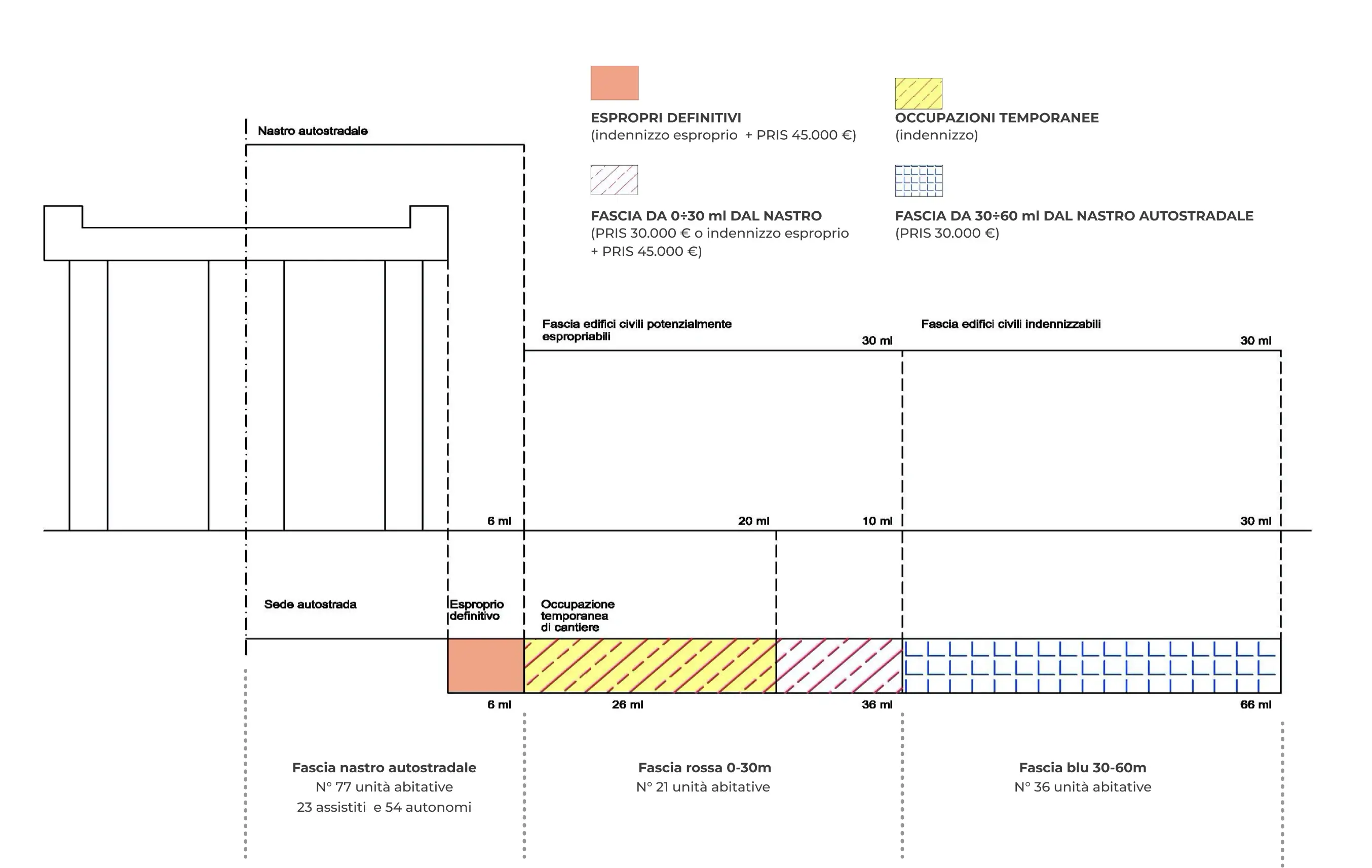
Gronda di Genova
The Regional Technical Committee to implement the Regional Strategic Intervention Programmes (PRIS), in application of Regional Law 39/2007 as amended and supplemented, defined the expropriation indemnities, in addition to the provisions of the Consolidated Text on expropriations for public utility (Presidential Decree 327/2001), to be paid to the residential and production units affected by the project. Following the public meetings held in the area, the criteria for calculating the indemnities were communicated:
The owners of buildings used for production purposes are compensated for the relocation of their activities, considering the loss of profit during the restarting period in addition to the costs born for moving and adapting the premises identified for independent relocation.
Landowners are compensated according to the value calculation methodologies established by the Technical Commission established within the Front Offices, based on the most favourable experiences at national level.
The owners of residential buildings are compensated at market values - without taking into account the depreciation that has occurred due to the planned construction of the Gronda and using as a reference the property values of the Agenzia del Territorio's Observatory as of September 2008 - as well as with the additional contributions for residents provided for by Regional Law 39/2007 as amended and supplemented, which operate only on buildings (no effect on land).
Resident tenants are compensated with the additional contributions for residents under Regional Law 39/2007 as amended and supplemented.

The relevance of the methodology adopted for estimating expropriation compensation to the purpose of the estimate;
The relevance of the data used in the estimation process and the appropriateness of the surveys carried out to collect them;
The correct application of the estimative methodologies used in the analysis;
The appropriateness of the analyses, considerations, and conclusions;
